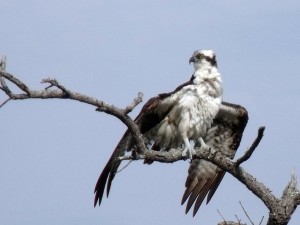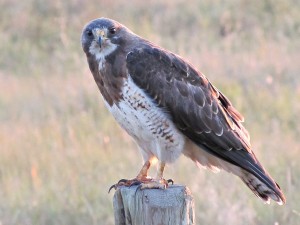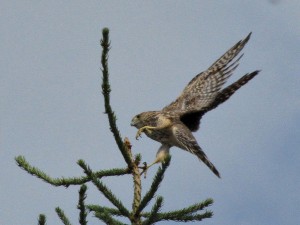A new report by the Raptor Population Index (RPI) Project shows that the majority of the 26 species of migratory raptors across North America are either recovering or in stable condition. RPI is a cooperative partnership among four leading raptor and conservation organizations: Bird Studies Canada, Hawk Migration Association of North America,
HawkWatch International, and Hawk Mountain Sanctuary.
Migratory raptors include hawks, falcons, kites, ospreys, harriers, eagles and vultures. The latest analysis examined datasets from 48 raptor migration watchsites from across North America. Results published include conservation status reports and an online resource for scientists, educators and wildlife enthusiasts featuring easy-to-read maps of population trends for each species.
How are raptors doing?
Most North American species are doing well. A stark exception is the tiny American Kestrel. Unfortunately this colorful falcon continues to raise alarm among conservationists. The new RPI analysis shows kestrels continuing the long-term decline reported in previous RPI analyses. “Conservation concern remains high for this species” says Laurie Goodrich, Senior Monitoring Biologist at Hawk Mountain Sanctuary, “and warrants increased efforts to monitor populations and identify causes of the decline.”
The good news is that the majority of raptor populations are stable or increasing. Bald Eagle numbers are stabilizing following long-term and widespread increases in populations documented by previous RPI analyses. Peregrine Falcon populations, once threatened with extinction, may also be stabilizing after a long period of steady growth. Likewise, the long-term upward trend for Merlin suggests their steady increase since the 1980s may have stabilized as well.
Many species show similar regional results. In the West, Swainson’s Hawks increased during the 1980s and 1990s and in the most recent decade shows stable levels. In the East, Broad-winged Hawk, whose spectacular, massive September flights attract large crowds of hawkwatchers, also shows stable numbers at most sites throughout the east.
Uniformity across the continent is, however, more the exception than the rule. Some species, such as the Golden Eagle show trends that differ regionally. During the past decade numbers seem to be stable or increasing in eastern and central regions, but show evidence of widespread declines at western monitoring sites.
Maintaining a continent-wide tracking system
The RPI system includes over 200 independent raptor migration sites across North America forming the world’s largest bird migration monitoring network. These sites are operated by highly skilled, mainly volunteer citizen scientists who use standardized protocols and submit their migration count data through an electronic database, HawkCount.org.
Launched in 2004 to mobilize the observations of thousands of hawkwatchers, RPI’s central aim is to produce and regularly update continental-scale assessments of the population trends and the conservation status of migratory raptors.
RPI’s first publication, The State of North America’s Birds of Prey, a 466-page book released in 2008, is regarded as a keystone in our understanding of migratory raptor populations and their conservation in North America. To increase accessibility, RPI will now deliver results online and update them annually. Once again, RPI has shown that the dedicated efforts of hawkwatchers across Canada, United States and Mexico can make an important contribution to raptor conservation.
Raptors are recovering from historic lows in their populations in the 1950s and 1960s (likely a combination of the post World War II “DDT era,” and increased pressures due to habitat lost and direct persecution). Does this mean we no longer need to be concerned about these birds? Definitely not. As Rosalie Edge, founder of Hawk Mountain Sanctuary in Pennsylvania said in 1934 “the time to protect a species is while it is still common.”
For more information on recent RPI results and population status updates for each raptor species, trend graphs and maps, visit the RPI website
Regional Population Trend Summaries – 2011
Source: Bird Studies Canada Press Release






Thought you might be interested in sharing a photo feature just posted to InsideHalton.com entitled Burlington’s angry birds. http://bit.ly/H6Krus